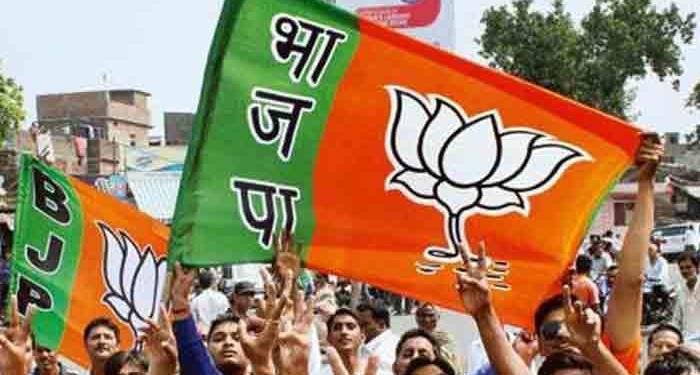According to various media reports, the assembly elections in three states- Haryana, Maharashtra, and Jharkhand may be advanced by several months to be conducted with the 2019 Lok Sabha elections in April-May this year.
The tenure of Haryana Legislative Assembly ends on November 2, 2019, the tenure of Maharashtra Legislative Assembly will get over on November 9, 2019, while Jharkhand Assembly completes its tenure on January 5, 2020.
In Haryana, the CM Khattar is confident with the party’s recent success in Jind by-polls and extraordinary performance in the mayoral elections in which it won all the five mayoral posts. He has expressed his willingness for simultaneous polls. In Jharkhand, the party may prefer early elections as it would be a perfect antidote to the proposed alliance of the Congress, Jharkhand Mukti Morcha (JMM), Rashtriya Janata Dal (RJD) and Jharkhand Vikas Morcha (JVM). BJP would like to employ its trump card to counter grand-alliance in the state. Maharashtra CM Devendra Fadnavis though is not in the favor of early elections, but he would have to follow the party’s decision if it pitches for simultaneous elections. If elections in the states of Haryana, Jharkhand, and Maharashtra take place simultaneously with the Lok Sabha polls, the states would get stable governments along with the same at the centre.
The party strongly believes that if state assembly elections are conducted with the Lok Sabha elections, PM Modi’s popularity may overshadow all other negative factors. In case of simultaneous polls, the opposition parties are likely to perform badly at the state level as BJP would have a face like PM Narendra Modi against opposition’s campaign.
The state assembly elections of Andhra Pradesh, Arunachal Pradesh, Odisha, and Sikkim are already scheduled to be held along with the Lok Sabha elections. There are also speculations about Jammu and Kashmir, where polls are likely to be held with the Lok Sabha elections. Currently, the state is under the President’s Rule.
Interestingly, PM Modi has been strongly campaigning for the ‘One Nation One Election’. The concept of simultaneous elections appears a justifiable proposition as the nation always finds itself in the election mode. Every year, one or the other state braces itself for an election and this entire process ends up consuming a lot of time and resource. This not only affects governance but also halts developmental projects. In order to get India rid of this vicious cycle of elections, PM Modi pitched the idea of simultaneous elections.
In April last year, a study by BJP on the idea of ‘one nation, one election’ had submitted its report to PM Modi. This had come after PM Modi asked the BJP leaders and its cadres to initiate deliberations on the matter so that a consensus could be reached. The report had suggested innovative modifications to deal with the issues of by-polls and mid-term polls. The NITI Aayog also came out with a report criticizing the present model of frequent elections. It is a well-known fact that due to frequent elections, almost all the parties remain in election mode and thus adopt populist measures with lack of farsightedness. In order to lure voters, decisive measures are always refrained from, and the agenda of development always suffers. Frequent elections not only lead to an unavoidable division of administrative resources and security personnel but also create a prolific atmosphere for caste and religion politics to perpetuate.
On the other hand, ‘One nation, one election’ will not only help in reducing the excess expenditure of taxpayers’ money on holding frequent elections but also allow the elected government to focus on the fundamentals of governance. When elections won’t be the primary concern, the government will be able to undertake and execute mid-term/ long-term projects with complete freedom, without having to weigh the pros and cons of every step. The idea of simultaneous elections is not new. In fact, the first few elections in the history of India were simultaneous elections. And now, the BJP is trying its best to revive the same old practice again as it has so many benefits in the offing.


































